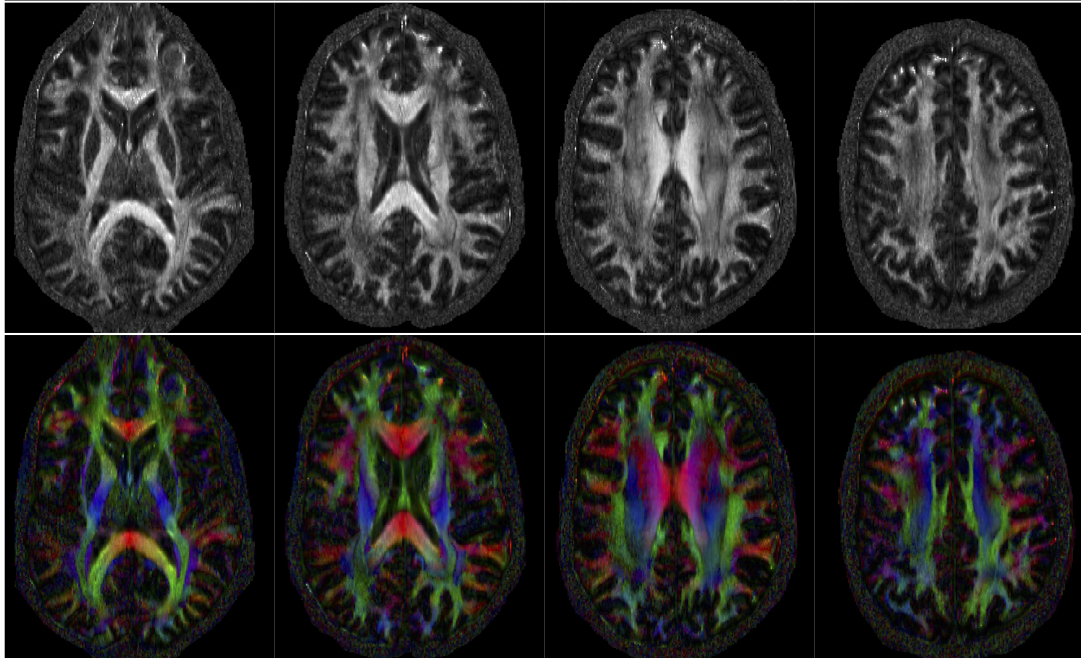Research
Model Based Deep Learning
|
We introduce a model-based image reconstruction framework with a convolution neural network (CNN) based regularization prior. The formulation provides a systematic approach for deriving deep architectures for inverse problems with the arbitrary structure. Since the forward model is explicitly accounted for, a smaller network with fewer parameters is sufficient to capture the image information compared to black-box deep learning approaches, thus reducing the demand for training data and training time. Since we rely on end-to-end training with weight sharing across iterations, the CNN weights are customized to the forward model, thus offering improved performance over approaches that rely on pre-trained denoisers. Our experiments show that the decoupling of the number of iterations from the network complexity offered by this approach provides benefits including lower demand for training data, reduced risk of overfitting, and implementations with significantly reduced memory footprint. We propose to enforce data-consistency by using numerical optimization blocks such as conjugate gradients algorithm within the network; this approach offers faster convergence per iteration, compared to methods that rely on proximal gradients steps to enforce data consistency. |
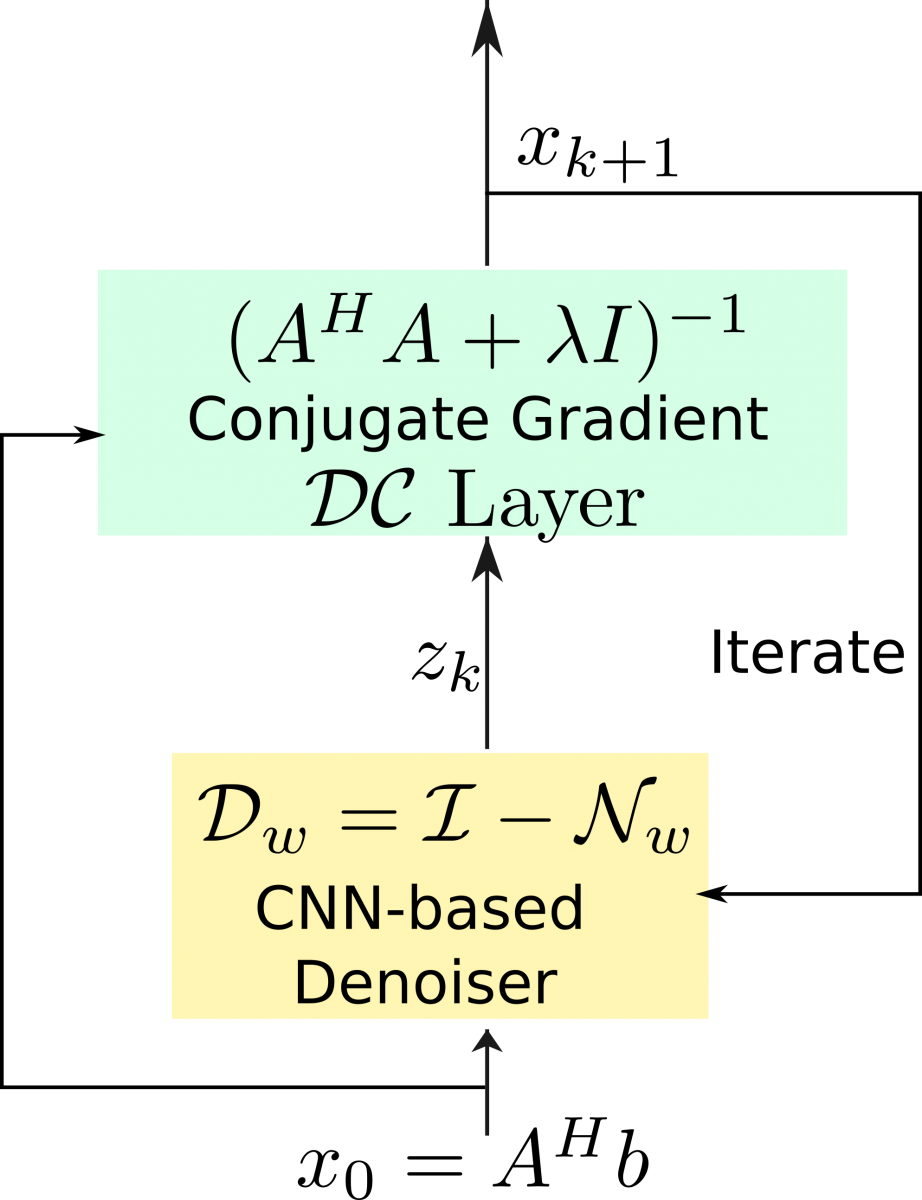 |
Continuous domain compressed sensing
|
The theory of compressed sensing (CS) has revolutionized the area of signal processing by overcoming classical resolution limits. However, current discrete CS formulations are often restrictive and results in model mis-match in imaging applications, where the recovery of a continuous domain image from continuous domain measurements is considered. We introduce a novel structured low-rank matrix completion formulation, where the recovery of a continuous domain image from its sparse measurements is considered. In particular, we reformulate sparse recovery of continuous domain signal as a low-rank matrix completion problem in the spectral domain, thus providing the benefit of sparse recovery with performance guarantees. Fast algorithms that are comparable in complexity to discrete compressed sensing methods are also investigated. This framework improved the state of the art in various applications including dynamic MRI, parametric imaging, and diffuson MRI. For details, see slides of the tutorial at ISBI 2017 by Mathews Jacob & Prof. Jong Chul Ye. |
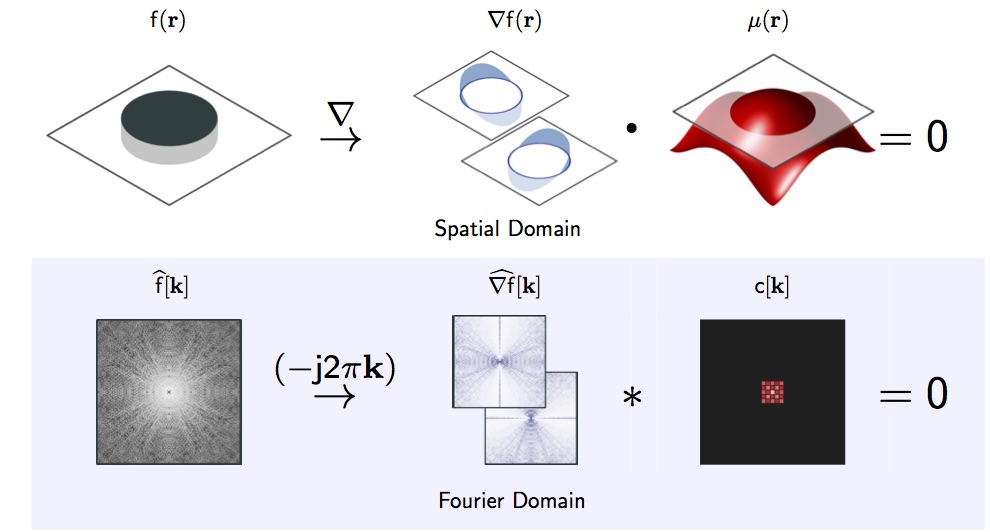
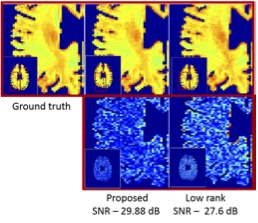 |
Learned image representations for multidimensional imaging
|
The recovery of the image data from sub-Nyquist sampled measurements using constrained image models is emerging as a promising approach to accelerate imaging. A challenge in using apriori selected models (eg. Fourier series, sparse wavelet representation) is that such models may not be efficient in representing the signal at hand. Our main focus is to develop novel theoretical framework and efficient algorithms to learn image representations from under-sampled measurements. The representations (blind compressed sensing, blind linear model termed as k-t SLR) enabled several accelerated MR imaging schemes. The proposed adaptive framework is a significant departure from classical approaches of using pre-determined dictionaries. We have also introduced theoretical guarantees for the recovery of such signals from undersampled data. The proposed framework is demonstrated to outperform classical compressed sensing methods in a range of applications including cardiac CINE MRI, myocardial perfusion MRI, dynamic lung imaging, and multi-parameter mapping where T1rho and T2 is simultaneously measured. |
|
Free breathing & ungated cardiac MRI using manifold models
|
Current cardiac MR imaging exams are long (> 1hr) and require the subject to hold their breath several times. These long scans are often challenging for several patient populations (e.g. obese subjects and patients with compromised pulmonary function). Our main goal is to develop a short 3-D free-breathing & un-gated cardiac imaging protocol to evaluate cardiac structure, function, perfusion, and fibrosis in obese subjects in a short scan time. This work is enabled by synergistic developments in novel ungated MR pulse sequences and a novel manifold regularization priors. The reconstruction framework, which exploits the manifold structure of images and patches in the dataset, is ideally suited to harness the flexibility and high acquisition efficiency of ungated 3-D sequences. |
|
High resolution metabolic MRI using learned models
|
MRI provides several contrast mechanisms to probe the metabolism (e.g. MRSI, CEST, T1rho) and the tissue microstructure (e.g. diffusion weighted imaging, relaxation parameters). However, a central challenge is the low signal to noise ratio of many of these imaging schemes, the long scan time, and vulnerability to several artifacts. We introduce novel pulse sequences & image reconstruction algorithms to mitigate the above problems. The learned models are observed to be highly effective in suppressing the artifacts, while significantly enhancing the spatial resolution and quality. |
|
High resolution brain connectivity mapping
|
The imaging of water diffusion using MRI enables the imaging of axonal brain connectivity. Our main focus is to capitalize the higher signal-to-noise ratio (SNR) offered by the ultra-high field (UHF) strengths to map brain connectivity at unprecedented spatial and angular resolutions. We introduce novel algorithms to minimize inter-shot motion induced distortions in multi-shot MRI; the multishot acquisition scheme provides improved SNR, which translates to higher spatial resolution. We also introduce novel compressed sensing strategies and joint k-q undersampling strategies to further improve spatial and angular resolution. |
|
Fast graph search algorithms for fat-water MRI
|
The decomposition of MRI data to generate water and fat images has several applications in medical imaging, including fat suppression and quantification of visceral fat. We introduce a novel algorithm to overcome the problems associated with current analytical and iterative decomposition schemes such as lack of flexibility and convergence to local minima. We introduced rapid graph search based algorithm, termed as GOOSE, which is robust to fat-water swaps in highly challenging applications with great success, improving over the state of the art significanltly. |
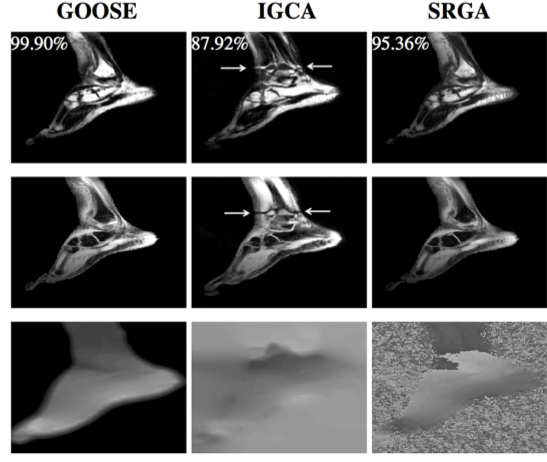 |

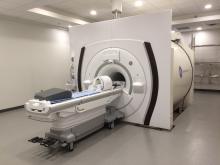
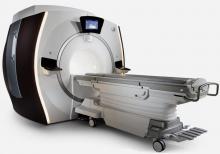
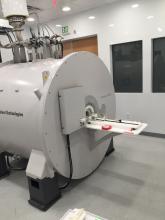

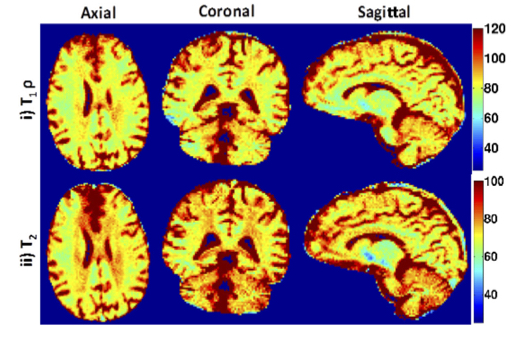

.gif)





